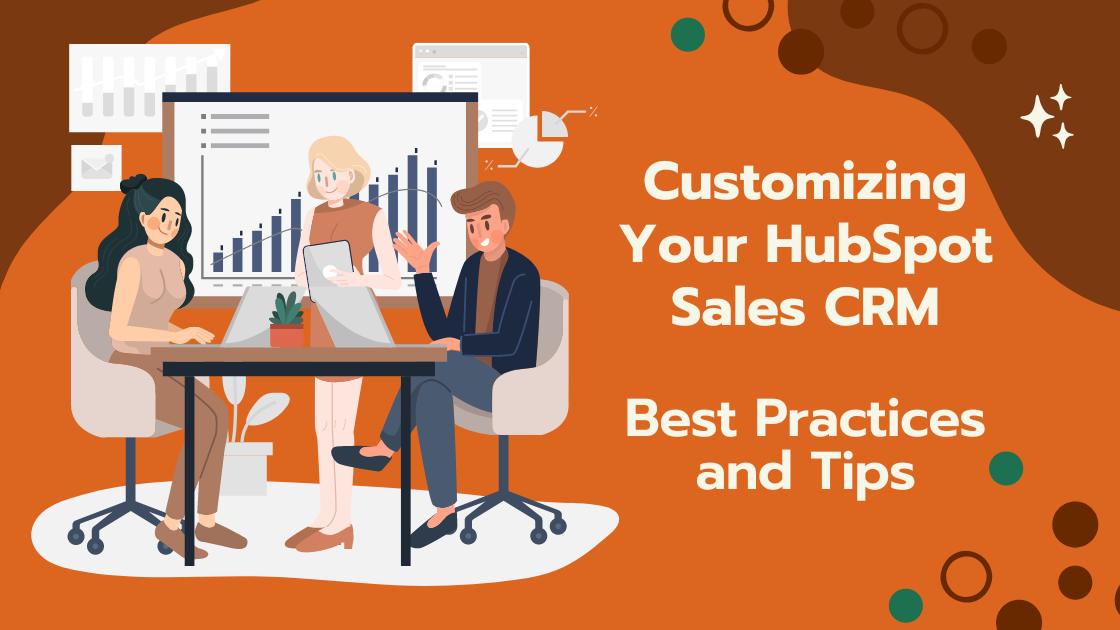-
MarTech Services
- HubSpot
- OneSignal
HubSpot
Technical Consulting
Partner with experts who understand your HubSpot systems and business needs inside out.
Revenue Operations
Drive revenue growth with tailored RevOps strategies designed for HubSpot users.
Hubspot Integration Services
Seamlessly integrate HubSpot with your existing tools to enhance operational efficiency.
Sales Enablement
Boost your sales team’s efficiency with focused HubSpot Sales Enablement solutions.
CRM Data Migration
Effortlessly migrate your CRM data to HubSpot with precision and support.
Hubspot Onboarding
Efficiently onboard clients to HubSpot, ensuring a smooth transition and rapid platform adoption.
HubSpot Administration
Maximize your HubSpot investment with expert management and optimisation tailored for HubSpot clients.
Marketing Assets Development
Develop, deploy, and manage digital assets, ensuring a fresh and engaging presence.
-
Solutions
-
Website Services
Website Development
We bring together expertise, creativity, and measurable results, making us the go-to choice for HubSpot website creation.
Website Migration
Our approach to website migration goes beyond a technical transfer; we prioritize a user-centric experience.
Website Maintenance
Optimize your online presence with effective, growth-driven websites focusing on nurturing website visitors, creating and deploying content, and tracking progress with precision.
Website Audit
Is your website performing at its peak? Our CMS Consultants are here to help you find out with our comprehensive Website Audit service.
-
Resources
-
Company
Clients
We have worked with clients from various industries across the globe, making our journey diverse and exciting.
Team
We put decades of experience where our mouth is. So what you get is market-tested and tried, not theory. We believe in plain speak, which we believe works better than jargon.
Solutions Partner
BlueOshan is not just a partner; we are among the most experienced and adept in the HubSpot ecosystem.
- Contact Us
Customizing Your HubSpot Sales CRM Best Practices and Tips

Asphia Khan
April 1, 2024

Implementing HubSpot Sales Hub CRM effectively can transform your sales process, but success depends on following proven best practices. Many organisations struggle to maximise their CRM investment, often missing critical optimisation opportunities that could dramatically improve sales performance.
This guide covers essential CRM best practices for HubSpot Sales Hub, helping you build systematic approaches that drive consistent results and sustainable growth.
Foundation: Setting Up Your HubSpot Sales Hub CRM
Data Architecture Best Practices
Effective CRM management starts with clean, well-organised data. HubSpot Sales Hub CRM performs best when your data structure aligns with your actual sales process.
Key Data Management Practices:
- Standardise Contact Properties: Create consistent naming conventions and required fields capturing essential qualification information
- Implement Lead Scoring: Use HubSpot's predictive lead scoring to prioritise prospects based on fit and engagement criteria
- Design Custom Properties: Build custom fields tracking your unique sales process requirements
- Establish Data Quality Rules: Set up validation rules and automated cleaning workflows, maintaining accuracy
Pipeline Configuration Best Practices
Your deal pipeline should mirror your actual sales methodology. HubSpot Sales Hub CRM allows extensive customisation to match your specific process.
Pipeline Optimisation Strategies:
- Define Clear Stage Criteria: Each deal stage should have specific, measurable advancement criteria
- Set Realistic Probabilities: Base stage probabilities on historical conversion data, not estimates
- Create Stage-Specific Actions: Use required properties and tasks, ensuring consistent execution
- Monitor Stage Velocity: Track average time in each stage to identify bottlenecks
Advanced CRM Best Practices for Sales Teams
Automation That Enhances Performance
HubSpot Sales Hub CRM excels when automation supports rather than replaces human judgment. Best practices focus on eliminating administrative tasks while preserving relationship-building activities.
Smart Automation Implementation:
- Sequence Optimisation: Create email sequences that adapt based on prospect engagement patterns
- Task Automation: Generate follow-up tasks automatically based on deal stage changes
- Lead Routing: Use automated assignment rules to distribute leads based on territory or expertise
- Activity Logging: Implement automatic activity capture, maintaining complete interaction histories
Integration Best Practices
HubSpot Sales Hub CRM becomes more powerful when integrated with your existing tech stack, eliminating data silos and creating seamless workflows.
Critical Integration Areas:
- Email Platforms: Sync email interactions, maintaining complete communication records
- Calendar Systems: Integrate scheduling tools, tracking meeting outcomes, and follow-up requirements
- Marketing Automation: Align lead handoff processes between marketing and sales teams
- Customer Success Tools: Create smooth transitions from sales to post-purchase support
CRM Best Practices for Sales Management
Performance Monitoring and Coaching
HubSpot Sales Hub CRM provides extensive analytics capabilities, enabling data-driven sales management and coaching.
Management Dashboard Best Practices:
- Activity Metrics: Track calls, emails, and meetings, ensuring consistent prospecting effort
- Pipeline Health: Monitor deal velocity, conversion rates, and forecast accuracy across team members
- Individual Performance: Use comparative analytics to identify top performers and coaching opportunities
- Goal Tracking: Set and monitor individual and team goals with automated progress reporting
Forecasting and Revenue Prediction
Accurate forecasting requires disciplined CRM hygiene and systematic deal management approaches.
Forecasting Best Practices:
- Regular Pipeline Reviews: Conduct weekly deal reviews, validating stage accuracy and advancement criteria
- Historical Analysis: Use past performance data to calibrate probability estimates and timing predictions
- Risk Assessment: Implement systematic risk evaluation and mitigation strategies
- Scenario Planning: Model different outcome scenarios, preparing for various market conditions
Customer Relationship Management Excellence
Personalisation at Scale
HubSpot Sales Hub enables personalised interactions even as your database grows through leveraging automation for relevant, timely communications.
Personalisation Strategies:
- Dynamic Content: Use contact properties to customise email templates and sales materials automatically
- Behavioural Triggers: Set up workflows responding to specific prospect actions or engagement patterns
- Account Intelligence: Leverage company data and news alerts, providing contextual conversation starters
- Communication Preferences: Track and respect individual prospect communication preferences and timing
Measuring CRM Success
Essential CRM Metrics
A successful HubSpot Sales Hub CRM implementation requires tracking the right metrics and continuously optimising based on performance data.
Core Performance Metrics:
- Data Quality Scores: Monitor completeness, accuracy, and consistency of contact and deal information
- User Adoption Rates: Track how consistently team members use CRM features and maintain data hygiene
- Pipeline Velocity: Measure speed of deal progression and identify process improvements
- Conversion Optimisation: Analyse stage-to-stage conversion rates and optimise weak points
ROI Measurement
Demonstrating CRM value requires connecting system usage to business outcomes and revenue impact.
ROI Tracking Methods:
- Revenue Attribution: Link CRM activities directly to closed deals and revenue generation
- Efficiency Gains: Measure time savings from automation and process improvements
- Win Rate Improvements: Track changes in close rates after implementing best practices
- Customer Lifetime Value: Monitor how CRM practices impact long-term customer relationships
Implementation Roadmap
Phase 1: Foundation Building
Begin with core setup and data migration, ensuring a clean foundation for advanced features.
Initial Setup Priorities:
- Data Migration: Clean and import existing contact and deal data with proper formatting
- User Training: Provide comprehensive training on basic CRM functionality and best practices
- Process Documentation: Document the current sales process and map it to the HubSpot Sales Hub stages
- Initial Automation: Implement basic workflows for lead assignment and follow-up tasks
Phase 2: Optimisation and Advanced Features
Once the foundation is solid, layer in advanced automation and analytics capabilities.
Advanced Implementation:
- Predictive Analytics: Enable lead scoring and deal prediction features
- Advanced Reporting: Create custom dashboards and automated reporting workflows
- Integration Expansion: Connect additional tools, creating seamless workflows
- Continuous Improvement: Establish regular review processes for optimisation and refinement
Common CRM Pitfalls to Avoid
Critical Mistakes:
- Over-Complication: Avoid creating overly complex processes that hinder user adoption
- Insufficient Training: Ensure ongoing education and support for team members
- Data Neglect: Maintain regular data cleaning and quality assurance processes
- Feature Overload: Implement features gradually rather than overwhelming users initially
Maximising Your Investment
HubSpot Sales Hub CRM offers powerful capabilities, but realising full value requires strategic implementation and ongoing optimisation. These best practices provide a roadmap for building systematic, scalable sales processes that drive consistent results.
Success with CRM best practices isn't about perfection—it's about continuous improvement and adaptation. Start with solid foundations, implement systematically, and refine based on performance data.
Ready to optimise your HubSpot Sales Hub CRM implementation? Blueoshan's certified experts help organisations implement these best practices systematically, ensuring maximum ROI from your CRM investment.

Related Articles

September 29, 2023

November 24, 2023
